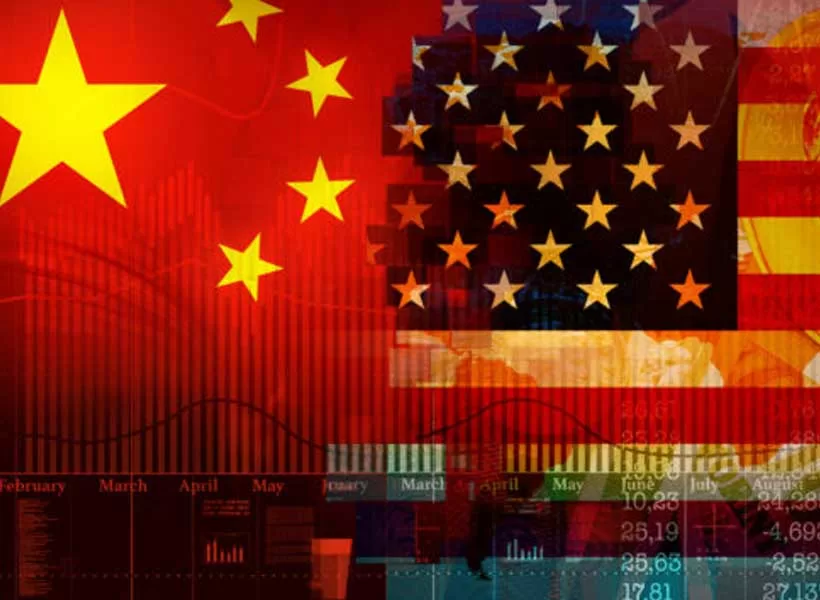U.S. President Donald Trump has targeted China with a cascade of tariffs on imports worth billions of dollars in 2025, aiming to narrow the trade deficit, revive domestic manufacturing, and curb the fentanyl trade. The year has seen a mix of escalating tariffs, export controls, partial trade truces, and diplomatic talks as both sides navigate the high-stakes economic and geopolitical confrontation.
Timeline of Key Events:
November 11: China announces it will broaden access and investment opportunities for U.S. companies, especially in the services sector.
November 10: China pauses port fees on U.S.-linked vessels and suspends sanctions on affiliates of South Korean shipbuilder Hanwha Ocean. The FBI director visited China to discuss fentanyl and law enforcement issues.
November 9: China suspends its ban on gallium, germanium, and antimony exports to the U.S., though licences are still required under dual-use controls.
November 7: Export control measures imposed on October 9, including restrictions on rare earths, lithium battery materials, and super-hard materials, are suspended. China begins forming a new rare earth licensing regime to potentially speed up shipments. U.S. soybean and log import licences are restored.
November 6: China purchases U.S. farm products, including wheat and sorghum shipments. COFCO holds a soybean procurement signing ceremony.
November 5: Beijing suspends retaliatory tariffs on U.S. imports from November 10, including farm goods, while maintaining some duties in response to Trump’s “Liberation Day” tariffs.
October 30: Trump and Xi Jinping strike a new trade truce in South Korea, agreeing on tariff reductions, increased U.S. soybean purchases, and measures against illicit fentanyl trade.
October 25-26: Malaysia talks produce a trade deal framework to be finalized by leaders after U.S. and Chinese officials meet.
October 17: U.S. State Department condemns Chinese sanctions on Hanwha Ocean as coercive.
October 15-16: U.S. officials criticize China’s expanded rare earth export controls; Apple pledges investment in China.
October 14: Both nations impose additional port fees; China sanctions five U.S.-linked Hanwha Ocean units.
October 12-13: China calls new U.S. tariffs hypocritical; U.S. negotiators maintain Trump-Xi talks are on track.
October 10: Trump announces additional levies on imports and export controls on critical software, while threatening Boeing-related measures. China investigates Qualcomm over its purchase of Israeli Autotalks.
October 9: China widens rare earth export controls; U.S. plans to ban Chinese airlines from overflying Russia.
October 1-August 11: Both sides discuss soybean purchases, extend tariff truces, and negotiate rare earth and AI chip licences.
July-June: Framework deals reached for rare earths and magnets; trade truce discussions continue with limited breakthroughs.
May-April: U.S. and China escalate tariffs repeatedly, targeting key goods and tech sectors. Measures include punitive duties, export restrictions on dual-use items, and sanctions on companies.
March-February: Tariffs on Chinese imports rise sharply, with China retaliating on U.S. agricultural exports and key industrial sectors.
Why It Matters:
The trade war has disrupted global supply chains, affected technology access, and influenced agricultural markets. It also carries geopolitical consequences, particularly for U.S.-China relations and for allies in Asia relying on stable trade flows. Rare earths, semiconductors, and AI chips essential for defense and emerging technologies are central to the strategic stakes.
United States: Trump administration, Treasury Secretary Scott Bessent, Trade Representative Jamieson Greer.
China: President Xi Jinping, Vice Premier He Lifeng, negotiators Li Chenggang and industry regulators.
U.S. Companies: Apple, Nvidia, Boeing, Qualcomm, among others, affected by tariffs, export controls, and investment restrictions.
Global Markets: Critical minerals, rare earths, semiconductors, agricultural commodities, and shipping sectors.
What’s Next:
Despite temporary truce agreements, negotiations remain fluid. Both countries must finalize terms for rare earths, agricultural imports, tariffs, and enforcement mechanisms. Any failure to do so could trigger new rounds of tariffs, impact global supply chains, and increase diplomatic tensions. Private investment and corporate strategy will continue to pivot in response to policy changes.
With information from Reuters.
